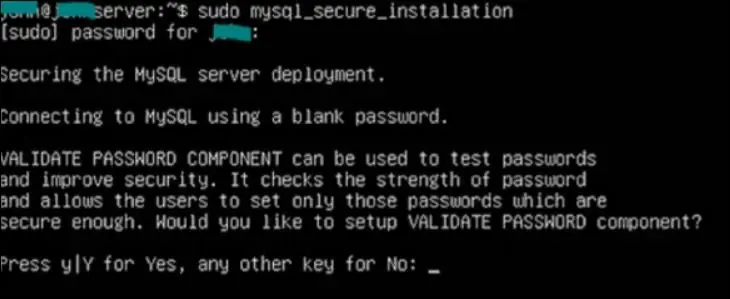MySQL on Ubuntu Server
- solbergtonje
- 16 nov. 2024
- 2 min läsning
Uppdaterat: 25 dec. 2024
Structured Query Language (SQL) is used for communicating with databases, and MySQL is a popular database management system (DBMS), read more here, as well as a part of the LAMP-stack.

Let's start by updating the package manager cache, run the command "sudo apt update"

Then install MySQL with the command "sudo apt install mysql-server"Write "y" to continue

MySQL is now installed on the Ubuntu Server, the next step is optional but recommended.
MySQL comes with a pre-installed security script, run this with the command "sudo mysql_secure_installation" Whether or not you choose to enable "validate password component", one should always use strong and unique passwords.

There will be questions about anonymous users, test database, and remote logins, it can be wise to answer "y" to remove and disable these.

Then answer "y" to reload for the changes to take effect immediately in MySQL

If you encounter this problem:

Resolve it by switching to another tty, for example with "CTRL + ALT + F2"

Run the command "sudo killall -9 mysql_secure_installation" in the other tty, in this example tty2. Then see how it has terminated the mysql secure installation in the original tty

Then start MySQL with the command "sudo mysql" and run this SQL query: "ALTER USER 'root'@'localhost' IDENTIFIED WITH mysql_native_password BY 'insert password here' ; "and then type "exit" to leave MySQL

Now run the mysql security script again with the command "sudo mysql_secure_installation"
To enter MySQL as the root user, run the command "mysql -u root -p"

To leave MySQL, run the command "exit"

Learn more about SQL and queries here
SOURCES




